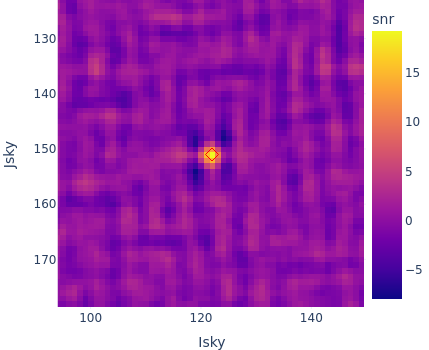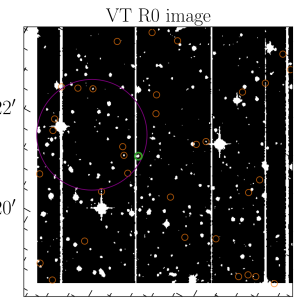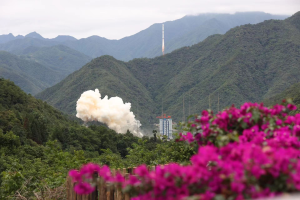A great night for hunting gamma-ray bursts
The burst advocate’s diary …
On Wednesday 5 February 2025, it was 10.25pm when I received a notification on my phone. The ECLAIRs telescope on board the SVOM satellite had detected a burst of X-rays and gamma rays and immediately triggered the satellite’s automatic re-pointing to observe the region of sky with the MXT and VT small field of view instruments.
We very quickly organised an emergency videoconference with the other scientists on call, during which we interpreted the first data sent in real time by the satellite via the VHF antenna network. This data, which includes a portion of the image of the sky acquired by the ECLAIRs telescope, gives us confidence in the astrophysical nature of the phenomenon detected: it is very probably a gamma-ray burst.

In order to alert the community, we drafted a circular summarising our detection, including the position needed to follow the phenomenon in optical. Initially, this position was provided solely by ECLAIRs, but after a few minutes we received a more precise location, obtained thanks to rapid observations with the MXT telescope on board SVOM. Our circular is published at 23:18 (T0+53 min): https://gcn.nasa.gov/circulars/39154. The burst was named GRB 250205A.
Meanwhile, the VT instrument is locating the source with an excellent accuracy of the order of one arcsecond (https://gcn.nasa.gov/circulars/39159). These observations confirm the transient nature of the phenomenon, as the luminosity is already starting to decrease. Time is running out to continue observations before it’s too late!

For the specialists on the ECLAIRs and MXT instruments observing at high energy, it’s time to go to sleep, but for the colleagues in charge of optical follow-up, it’s only the beginning. In the hours that followed, several ground-based observatories began observing the sky around the position provided by SVOM: the Observatoire de Haute-Provence (T193), the Roque de los Muchachos Observatory on the island of La Palma (LT, GTC), and the National Astronomical Observatory of San Pedro Mártir in Mexico (Colibri). Space telescopes are also observing the target (Swift, Einstein Probe).
These various optical and near-infrared observations also confirm the transient nature of the phenomenon, with the luminous flux diminishing rapidly over time.
Thanks to spectroscopic observations made at just T0+1h45 with the Large Telescope on the Canary Islands (10.4 m in diameter), the distance of the gamma-ray burst has even been determined. Its redshift is 3.55 (https://gcn.nasa.gov/circulars/39160), which means that the light emitted by this gamma-ray burst – which undoubtedly marked the birth of a black hole during the collapse of a very massive star – was emitted at a time when the Universe was only 1.8 billion years old. Its light travelled to us for almost 12 billion years before being detected by the instruments aboard SVOM!
There is still a lot of analytical work to be done to fully understand the precise nature of the phenomenon and to determine its characteristics, but we can already be delighted that the sequence of multi-wavelength observations, both onboard SVOM and on the ground within the community, has been carried out so quickly. This made it possible to observe the burst at several wavelengths and even to obtain its distance.


